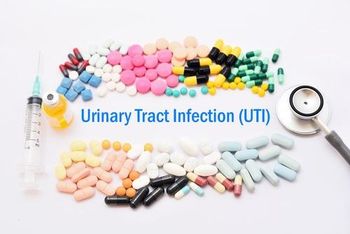
Antibiotics
Latest News

Latest Videos

CME Content
More News

If approved, Spero Therapeutics and GSK’s antibiotic, tebipenem HBr, could be the first oral carbapenem for US patients with complicated urinary tract infections (cUTIs).

TAXIS Pharmaceuticals announced it received a $2.9 million federal grant, which will allow the company to further advance its efforts with its dihydrofolate reductase inhibitors for the rapidly spreading and antibiotic-resistant strain of Neisseria gonorrhoeae.

Innoviva Specialty Therapeutics’ antibiotic is the first and only FDA-approved cephalosporin indicated to treat Staphylococcus aureus bacteremia, including right-sided endocarditis, caused by the methicillin-resistant Staphylococcus aureus.

The international organization’s first set of guidelines for this serious condition are looking to reduce mortality and morbidity.

In our latest From Pathogen to Infectious Disease Diagnosis podcast, bioMérieux Chief Medical Officer Chuck Cooper, MD, discusses the burden of resistance and insights on the company’s novel Vitek Compact Pro ID/AST system, which looks to identify infectious disease in a timely manner and aid clinicians in diagnosing patients, streamlining antimicrobial treatment, and avoiding severe complications such as sepsis.

A large retrospective cohort study demonstrates greater resistance across different pathogens in this patient population compared with those who do not have cancer.

WikiGuidelines produces novel clinical practice guidelines developed with pragmatic, applicable methodology, including a diverse author group.

An "alarmingly" wide treatment gap for antimicrobial-resistant infections in under resourced countries is attributed to multiple factors including barriers to access.

De-escalating empiric antimicrobial therapy is a strategy to combat antimicrobial resistance. Antimicrobial stewardship programs can play a major role in preserving antibiotic effectiveness and preventing unnecessary antibiotic use.

Sean Nguyen PharmD, BCIDP, medical director Shionogi, delves into the European cohort portion of the study and offers further information from the trial and some of its bigger clinical ramifications.

Prompts in Computerized Order Entry Improve Antimicrobial Treatment for Skin, Soft Tissue Infections
The INSPIRE 3 trial demonstrates that computerized order entry recommendation prompts can reduce empiric use of broad-spectrum antibiotics in favor of targeted treatment for skin and soft tissue infections.

From the discovery of penicillin to PK-PD principles: A brief historical overview and what we have learned from recent clinical trials.

A preclinical study shows the antibiotic, piperacillin, was effective at much lower dosages than doxycycline, and did so without disrupting the gut microbiome.

Rifaquizinone is a dual-pharmacophore antibiotic combining rifamycin and a fluoroquinolone-like compound, showing strong bactericidal activity against resistant Staphylococcus aureus strains and biofilms, with promising results for treating prosthetic joint infections (PJI) but limited oral bioavailability.

A recent study evaluated bundled ambulatory stewardship interventions (ASIs) — audits, reporting, webinars, and electronic alerts — to reduce inappropriate antibiotic prescriptions (IAPs) for acute uncomplicated bronchitis (AUB).


A Centers for Disease Control and Prevention study looked at the COVID-19 pandemic's effect on hospital-onset infections. Study lead author Hannah Wolford offers insights on it, including what patient populations were most affected, and the significance of infection prevention strategies.

In a phase 3 study, GSK’s gepotidacin demonstrated 92% efficacy against the sexually transmitted infection.

MeMed CEO Eran Eden, PhD, discusses the MeMed BV test and how it can help make the distinction between the types of infections, aid in patient management, and reduce antimicrobial resistance.

A surge in invasive group A Streptococcal (IGAS) infections in children marked by more virulent strains followed a reduction in cases coinciding with protective measures for the pandemic.

Study shows benefit using antibiotic earlier in clinical care for gram-negative infections.

Although the TB pipeline has several new agents in various phases, challenges to antimicrobial development remain. Therefore treatment adherence remains paramount.

Patients with suspected sepsis in the emergency department are twice as likely to survive at 28 days when antibiotics are started within 1 hour.

Indwelling devices and previous antibiotic exposure increased the risk for these infections.

Clinical-stage company, BiomX, said its therapy, BX211, was found to be safe and efficacious for this infection that was associated with Staphylococcus aureus.


























































































































































































































































































